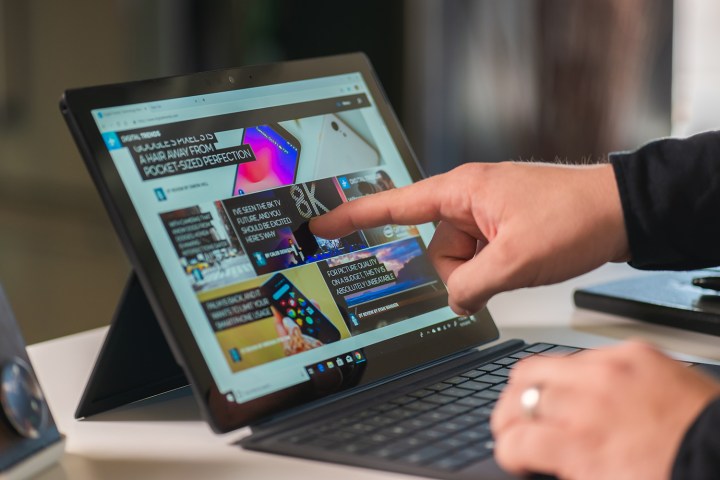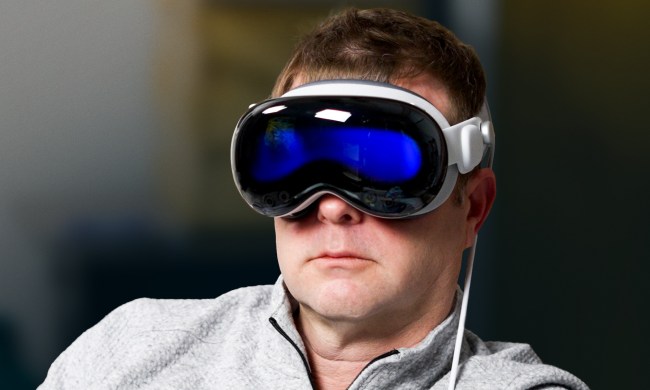If you’re looking to buy a Surface-branded device from Microsoft, you can choose from a number of options, including the Studio, Laptop, Book, Pro, or the ultra-portable and affordable Surface Go. Each device is great, targeting a specific market: Studio as the all-in-one PC, Book as the detachable, Pro as the iPad killer, and so on.
But which one is right for you? In this comparison, we pit the Surface Pro 6 against the Surface Go to see which model provides the best bang for your buck.
Design

In terms of design and build, the Surface Pro 6 and the Surface Go are on a similar footing. Both are built with Microsoft’s magnesium material and sport a sturdy articulating kickstand with a movement of up to 165 degrees. This makes them hard to tell apart from afar, but there is still one way to compare the two: Size.
The Surface Go is more of a compact iPad-like device. It sports a 10-inch screen with a 1,800 x 1,200 resolution and a pixel density of 217. The Surface Pro 6 is bigger, more like a traditional PC. The 12.3-inch screen accounts for a larger 2,736 × 1,824 resolution and a pixel density of 267.
Both displays look great, but for long periods of use, the Pro’s bigger display is the more comfortable option.
Just like with the display, the Type Cover keyboards are also different between the two models. The keyboard on the Go is impressive, but the 10-inch size is just not as comfortable over long periods, and the layout is a bit cramped. The Surface Pro 6, however, is the better option if you type a lot.
In both cases, the detachable Type Cover isn’t bundled nor is the Surface Pen stylus.
Performance

The difference in performance between the two Surface devices comes down to chipsets and pricing.
The Surface Go starts at $400 and sports an Intel Pentium Gold 4415Y dual-core processor with up to 8GB of RAM and 128GB of storage space. Currently, Microsoft offers three set configurations, with the most expensive including 4G cellular connectivity.
Meanwhile, the Surface Pro 6 has more hardware options. These include a quad-core 8th-gen Intel Core i5 or Core i7 processor with 8GB or 16GB RAM along with 128GB to 1TB of storage, depending on the configuration. The base $900 Surface Pro 6 comes with the Core i5-8250U processor, which we found was good enough for running more intense software.
For the extra $500 with Surface Pro 6, you get a more powerful processor, which is good for more demanding tasks like photo and video editing or running a multiple-monitor workstation. The Intel Pentium Gold 4415Y dual-core chip on the Surface Go is impressive for what it is, but you’ll be limited to more basic computing tasks.
Bear in mind, the Surface Go ships with Windows 10 Home in S mode, so you’ll initially be limited to using apps on the Microsoft Store. However, you can always revert to Windows 10 Home for free via the Microsoft Store. The Surface Pro 6 ships with Windows 10 Pro, so there are no worries about app limits there.
Portability

The Surface Go measures 9.65 x 6.90 x 0.33 inches and weighs about 1.15 pounds. That’s significantly smaller than the Surface Pro 6, which is 11.5 x 7.9 x 0.33 inches and weighs 1.71 pounds. Here the Surface Go is noticeably lighter and makes it a far better tablet. Unlike the Surface Pro 6, you can easily use it in one hand.
Since you’re using the devices while out and about, battery life will be an issue. The Surface Go falls very short, as we saw between 2 and 5 hours of battery life. The Surface Pro 6, however, almost triples that, as we saw 9.5 hours when web browsing and 14 hours when watching videos.
As for device connectivity while on the go, the differences between the Surface Go and the Surface Pro 6 boils down to USB-C.
The Surface Pro 6 comes with mini-DisplayPort and a classic USB-A port. That is a somewhat aging tech, but if you’re all about living a dongle-less life and are not yet feeling ready for USB-C, it’ll be more convenient.
The Surface Go includes a single USB-C port for both charging and data. This is great for when you’re looking to charge up the device on the go or use those dongles to extend your connectivity range.
Both devices also include Microsoft’s proprietary Surface Connect port and a headphone jack.
Bigger is better: Buy the Surface Pro 6

If you can’t decide between the two, we recommend the Surface Pro 6 if it’s within your budget. It has better performance, though the Surface Go still offers sound processing at a lower price.
The Surface Pro 6 has some faults; it’s bulkier than the Surface Go and lacks a USB-C port. However, the bigger form brings a few benefits. However, that means it has a more prominent display, larger keyboard, and longer battery life.
For a less expensive choice, the Surface Go is a compact, affordable option. For those who want a little more performance and don’t mind the slightly larger size, the Surface Pro 6 is a perfect choice.



